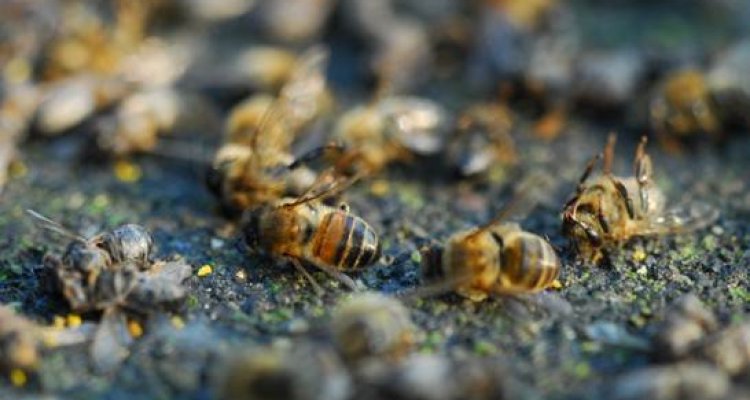
Bee mortality
Winter mortality of entire honeybee colonies can have multiple causes, such as poor quality and inadequate food, diseases and parasites such as viruses and Varroa mite, and possibly by pesticides. This type of mortality occurs between September and April.
What is bee mortality?
Bee mortality cannot be interpreted as a single concept. If only few bees die, then this is usually not a problem. But if much of a bee colony or an entire colony dies, then the alarm bells start ringing. Bee mortality can have multiple causes. During the growing season, bee mortality can be caused by pesticide spraying or certain diseases such as Nosema and Acarapis. But lack of food can also be a cause.
Winter mortality
Winter mortality of entire bee colonies is a different matter entirely. This type of mortality occurs between September and April and is often multifactorial. An important role is played by factors that have a direct negative impact on the health of 'winter bees'. This generation of long-lived bees is needed for colonies to survive the winter. The lifespan and physiology of winter bees can be affected by poor quality and inadequate food, diseases and parasites such as viruses and Varroa mite, and possibly by pesticides. To make it even more complex, these factors also vary over time (for instance between seasons) and between regions, sometimes by country or region, or even per apiary. Bijen@wur investigates which factors play a role in winter mortality and how they influence each other.
Colony collapse disorder (CCD)
Winter mortality is often confused with the terms disappearing disease and colony collapse disorder (CCD). These 'symptom complexes' can cause winter mortality, but not all winter mortality is associated with them. For example, winter mortality can occur because a colony loses its queen or simply starves. CCD and disappearing disease have a number of similarities; the most obvious characteristics are the following:
- The beehive is entirely abandoned (possibly with a few dead bees with the queen, in or near the hive),
- Presence of capped brood,
- Presence of food stores, both honey and bee pollen.
CCD has so far been described only in the USA, where in some years it is responsible for most bee mortality (60% of all mortality in the winter of 2007-08, compared with 15% in the winter of 2008-09; Ellis et al. 2010, Journal of Apicultural Research 49(1): 134-136).
Disappearing disease is not a recent phenomenon, but was described for instance in 1990 by Ko Zoet in the periodical Bijen of the Association for the Advancement of Beekeeping in Netherlands (VBBN). At that time it was primarily associated with the consequences of Varroa destructor. Moreover, the 'Beekeeping Workbook' of Speelziek (published around 1980, before the first Varroa mite infestations) devoted a page to this disease.